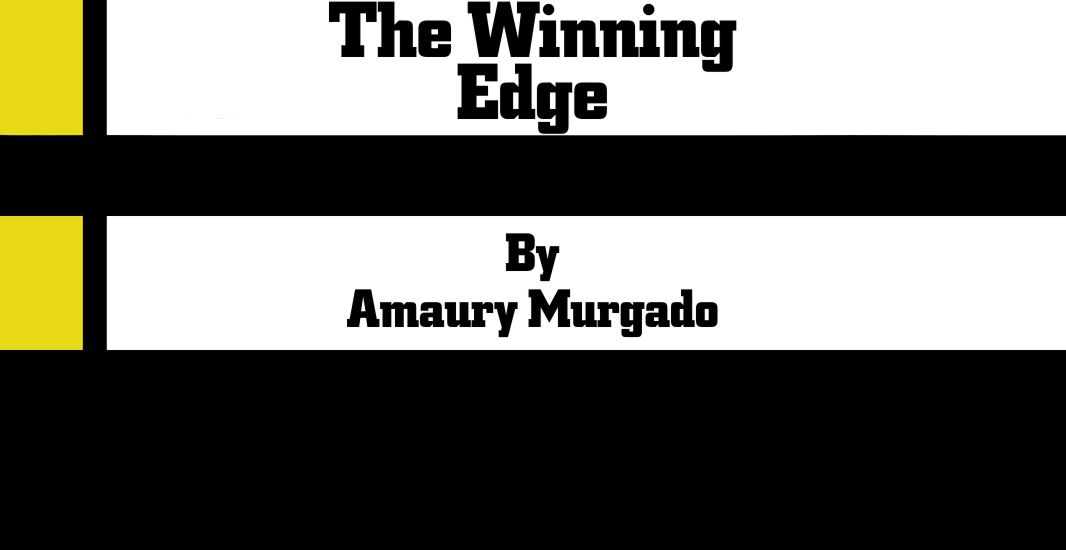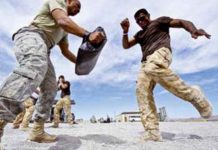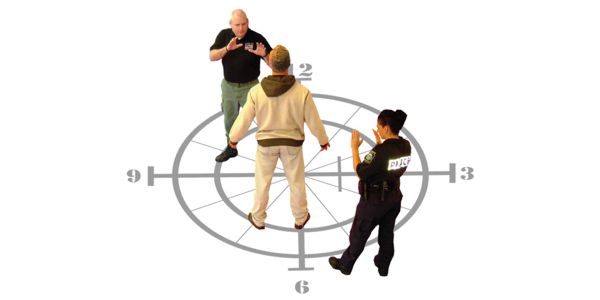
Defensive tactics programs and police combatives programs often fail as a system because they encompass a set of techniques instead of following a set of principles. Most programs have no central philosophy and are nothing more than adapted martial arts techniques that take months to perfect. This is where we can take a quick lesson from Sun Tzu, who is often quoted in law enforcement circles but seldom fully understood or applied.
Sun Tzu’s strategies are proven principles that are as valid today as they were centuries ago, and can easily be applied to police combatives. Take for example that Sun Tzu stressed that the highest skill for a warrior is to win without fighting: “For to win 100 victories in 100 battles is not the acme of skill. To subdue the enemy without fighting is the acme of skill.” In other words, true warriors use their skills only when necessary. It stands to reason that in our legal system, objective reasonableness stems from the adage “less is more.” This is the ethos for Kevin Dillon and the L.O.C.K.U.P. Police Combat System.
The Program
I recently attended the train the trainer instructor certification program for handling resistance and aggression. Originally I was sent by my office to only evaluate the program and its effectiveness. But I was so impressed with the system and its philosophies that I adopted them as my own and was spurred to help with its implementation in my department and hopefully throughout Florida. I believe the L.O.C.K.U.P. system incorporates the right approach to law enforcement combatives in both theory and application.
A 25-year veteran law enforcement officer, Kevin Dillon retired as a lieutenant from the Wethersfield (Conn.) Police Department, where he held leadership positions on multiple details, including SWAT. He is also a graduate of the F.B.I. National Academy and has recently received certification from the Force Science Institute.
With this diverse enforcement background and experience, Dillon has been able to look at police combatives from just about every angle and perspective as both operator and administrator. Because he understands what works, when you apply his strategies, you prevail.
L.O.C.K.U.P., which stands for Law Officers Combat Kinetics Unarmed Panoply, is designed by cops for cops. The main objective is learning strategies to stop aggression and resistance before they escalate to a higher use of force. It teaches arrest and control maneuvers that can be used against all levels of physical resistance and aggression.
The program’s strategies have evolved in the context of understanding cognitive and physiological processes that are always present under stress. In essence, the program teaches you to embrace these processes and use the resulting gross motor function to your advantage.
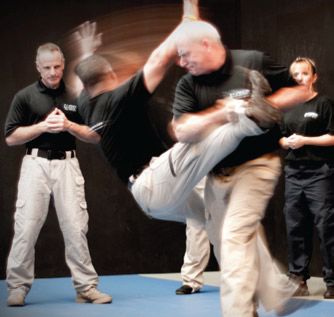
The System’s Core
The core of L.O.C.K.U.P. focuses on techniques for unarmed police combat that combine dynamic arrest and control tactics. These tactics are founded in basic fighting skills that can be applied in any environment.
A fundamental principal of the system is to identify pre-attack indicators,
act upon them, and end the fight before it starts. We take our cue from Sun Tzu; “To fight and conquer in all your battles is not supreme excellence; supreme excellence consists in breaking the enemy’s resistance without fighting.” You need to act decisively using a strong offense before the situation escalates to a point that requires a much broader use of force.
L.O.C.K.U.P. works because it has molded specific fighting skills around an officer’s physical and physiological changes during altercations, thus maximizing the officer’s effectiveness. This easily falls under another Sun Tzu strategy: “If you know the enemy and know yourself you need not fear the results of 100 battles.”
Knowing how your mind and body work under stress creates a huge advantage. In our system, we embrace this knowledge. Dillon says it best: “Your body will dictate
your physiological changes during a violent encounter; your training will dictate
your response.”
Another fundamental principal is to create a strategic response from your opponent when striking. For example, when performing a knee-drop strike, we know the opponent will move a certain way which leads us directly into a follow-up technique. We focus on how to maximize strikes by placing the smallest area possible onto the target, thus generating the greatest pounds per square inch of kinetic energy.
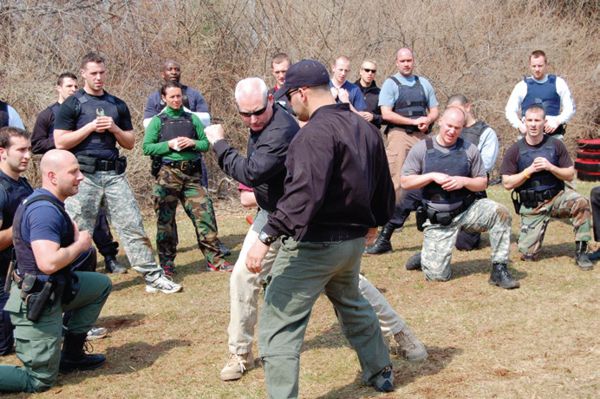
A simple illustration of this is when you step barefoot onto a small rock. The reason
it hurts so much is because the rock creates a small area with the greatest pounds per square inch acting on it.
Also, by using a 12 o’clock and 6 o’clock shoulder position while striking, you learn to conserve energy and set up for the next strike simultaneously. This is an example
of how our system helps to maximize efficiency
and conserve energy.
L.O.C.K.U.P. creates a strategy around three possible fighting platforms: standing,
kneeling, and ground. We don’t teach “stances” because the term subconsciously implies a stationary position. A “platform” by nature describes a position to work from and subconsciously implies options. For example, if you have been knocked down, we work toward assuming a knee platform. Using this strategy gets you up off the ground, giving you a chance to assess and, more importantly, the opportunity to launch a counter attack and regain control.
Realistic Drills
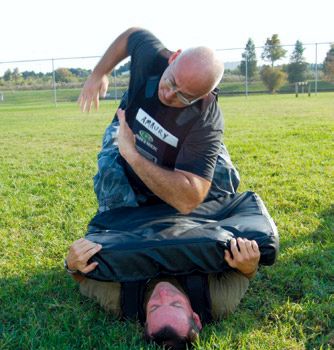
There is a school of thought that suggestswe learn by using analogies and therefore by reflecting on past experience. It would only make sense that we incorporate realistic drills in our training. Research shows that cognitive reasoning allows you to file away experiences (whether real or induced) and draw from them in an actual combative situation.
One drill is conducted in total darkness except for the light emitted from a police car’s lightbar (strobes). We include loud head-banger music as an additional distraction.
We then call out specific maneuvers for the officers to perform. This set of stimuli creates an almost surreal situation. To the participant, it looks like everything is happening in slow motion. The officer’s mind is struggling to comprehend the differences between the illusion and reality. She is faced with trying to control an opponent who appears to be alternating in and out of view.
Another core drill we practice consists of having an officer close his eyes as someone knocks him to the ground and continues to attack. The officer soon finds himself looking up at a crazed partner grabbing for his throat. It becomes so realistic that we have to monitor the officers’ response because they react as if it were real.
Physiological Response
Every officer needs a core set of skills to survive violent encounters and gain control. In today’s police training environment, the techniques need to be easily earned, readily retained, and performed for effect under stress. In order to do this, trainers need to create an advantage. Our advantage lies in the knowledge of human physiological responses. This means capitalizing on gross motor skills when the body and mind go into that mode. L.O.C.K.U.P. proves its mettle consistently by having students executing techniques for effect in a short time.
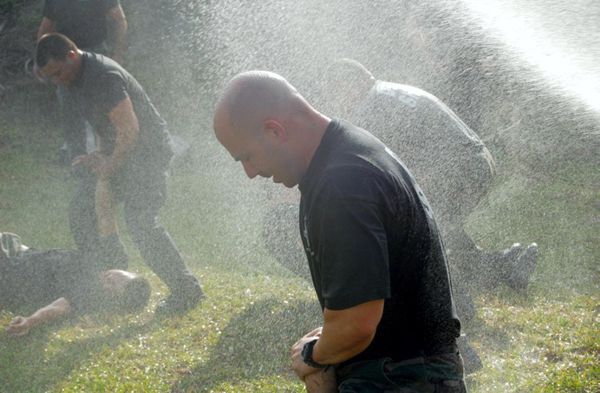
Dillon stresses that by reading pre-attack indicators officers can stop an act of aggression before it gets out of control. This is another founding principle that
leads right back to Sun Tzu: “Opportunities multiply as they are seized.” We can maintain an advantage by acting instead
of reacting.
Reflect back on training videos that have left you scratching your head because of the lack of action on the officer’s part. By acting swiftly and decisively you create and seize your own opportunities. Dillon stresses that “this can only be done in the offense and not from a defensive posture.”
Application
Posturing is another key element found in the human condition. How often have
you taken a step backward into your fighting stance? What message does that really send to your opponent? If you step forward into your fighting platform, duck your shoulders, and tilt your chin down, your message is very different. It shows you mean business.
Positioning with a cover officer is also important in order to set up for a takedown. In the L.O.C.K.U.P. system, cover officer training is more than just positioning; it’s part of a larger strategy that sets us up to effect a takedown. Sun Tzu teaches that “All warfare is based on deception.”
One officer keeps the suspect busy while the cover officer moves into a 5 o’clock position. Using a prearranged signal, the cover officer then executes a rear sentry takedown. This technique is very simple yet highly effective. It can be used on any size opponent and learned very quickly.
Final Thoughts
The training I have received from Lt. Dillon has changed the way I view training. We need sound strategies that revolve around physiological responses that capitalize upon gross motor skills. We need to tailor our training around reality and stop creating paper tigers. At L.O.C.K.U.P., we have realized that we don’t need to adapt our techniques, but instead have changed our philosophy. Like Sun Tzu, if we know ourselves and know our opponents, we will win our battles.
Amaury Murgado is a road patrol lieutenant with the Osceola County (Fla.) Sheriff’s Office. He is a retired Master Sergeant from the Army Reserves, has 23 years of law enforcement experience, and has been involved with martial arts for 37 years.

